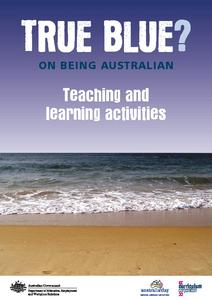Curated OER
Non-Verbal Communication
Many developmentally disabled students struggle with accurately conveying messages and interpreting those of others around them, especially when they are non-verbal. This instructional activity contains fun activities and exercises, such...
Curated OER
Color Psychology
Students develop a list of what they believe each feeling a color represents. Individually, they use the internet to research how different colors make us feel, behave or act. To end the lesson, they complete a worksheet and discuss...
Curated OER
Communication: Asking Honestly for What You Want
Students discover psychology by participating in a relationship activity. In this honesty lesson, students read text which discusses the importance of being upfront with your feelings. Students complete teenage communication worksheets...
National Australia Day Council
True Blue? On Being Australian
Who or what is an Australian? Discover a plethora of student-centered, engaging activity ideas on the question of Australian identity, organized according to five major themes: people, symbols, place, sport, and words.
Curated OER
Building Bridges for Young Learners - Self
Students explore self analysis by investigating other cultures. In this personal characteristics lesson, students utilize the Internet to read about a child from Niger, and many other students around the globe. Students compare their own...
Curated OER
Valentine's Day
Student's research the history to Valentine's Day. They take an online quiz and then think about all the different meanings of love. Sharing of ideas is involved within this lesson. They ponder on how emotions can be expressed in...
Curated OER
Puberty
Students identify three physical and emotional changes boys and girls go through at puberty. They also discuss the difference in ages in which puberty occurs and complete worksheets.
Curated OER
"my Dear Little Boys..." Using Wwii Primary Documents: a Letter Home From the War
Students read letters written by soldiers during World War II in order to analyze the soldier's feelings about the war. They explain how these primary sources teach appreciation for the World War II soldier's experiences.







